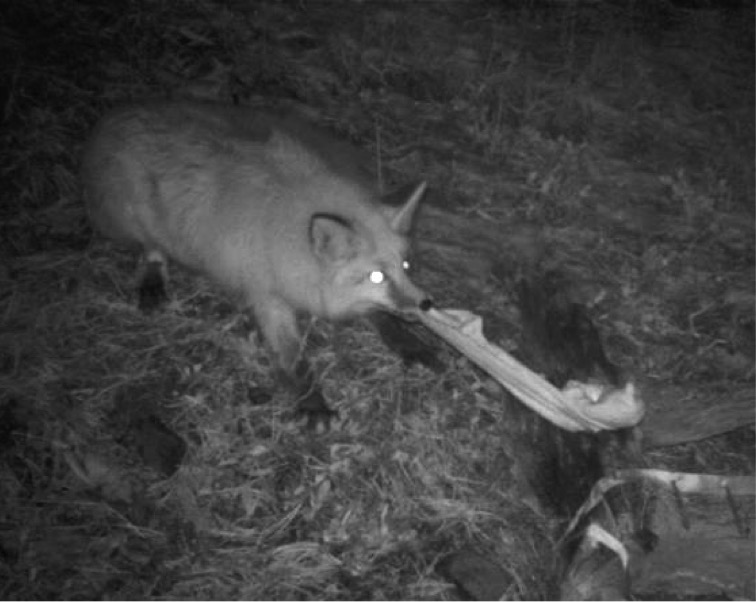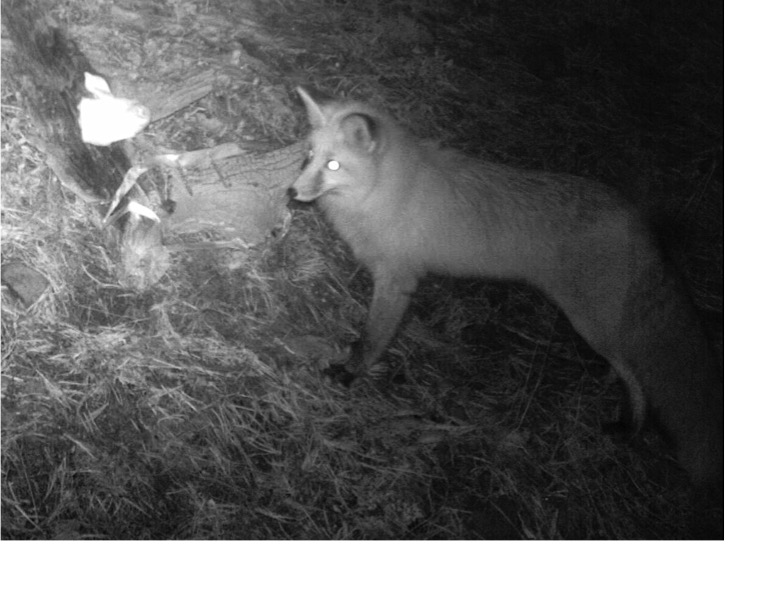Then, in the midst of pictures showing common wildlife species, there suddenly is photo proof that an elusive fox is still surviving in some high elevation wild area. These two photos show a Sierra Nevada red fox that visited a CSERC camera set up in a remote mountain location last fall, just before snowy weather ended any further camera access for the rest of the winter.

Photos showing where the Sierra Nevada red fox persists can be important. Pictures are valuable when federal and state wildlife agencies attempt to understand exactly where the scattered foxes are located across public and private lands. CSERC staff has spent years partnering with agency biologists and university research scientists to share our results (which have included positive scat samples as well as photographs).
Another key value of discovering the rare fox is that agency decision-makers then have that information to consider as they make land management decisions that could affect the rare species. A third benefit of CSERC’s photo-detection surveys is the large number of photos that do not reveal any rare wildlife. Those photos often do, however, show mountain lions, coyotes, bobcats, or other potential predators of the fox. That information can bolster the often meager amount of data available about which threats to the fox are most serious.

Our staff welcomes any rare wildlife sighting tips. We encourage you to be our eyes and ears out in the high mountains and to notify us immediately if you see what you believe is a Sierra Nevada red fox or a wolverine.
We also search for middle and upper elevation furbearers (such as the rare Pacific fisher and the American marten) along with the seldom seen porcupine. While porcupines still are spotted fairly frequently in the Tahoe region, photos or sightings of porcupines in our local forest region are near zero.
Please contact John or Megan at our Center (209) 586-7440 with any sightings worth sharing.

